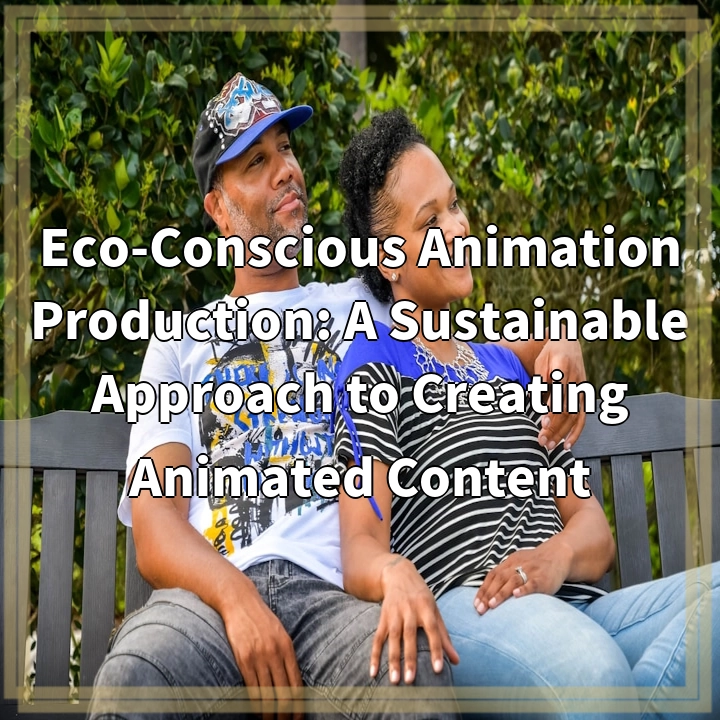
What is Eco-Conscious Animation Production?
Eco-conscious animation production refers to the practice of creating animated content while prioritizing sustainable and environmentally-friendly processes. It involves adopting eco-friendly practices throughout the entire production cycle, from pre-production to post-production, to minimize the negative environmental impact associated with animation production.
Real-World Problems Associated with Eco-Conscious Animation Production
1. Energy Consumption
Traditional animation production requires a significant amount of energy, particularly during the rendering process. The rendering process involves converting computer-generated images or 3D models into animated sequences, which can be extremely resource-intensive. This high energy consumption contributes to greenhouse gas emissions and exacerbates climate change.
2. Waste Generation
Animation production often involves the use of various materials, such as paper, paints, and plastics, which can generate a significant amount of waste. Additionally, obsolete or damaged equipment, as well as outdated software, contribute to electronic waste. Improper disposal of these materials can harm the environment and contribute to pollution.
3. Carbon Footprint
The entire animation production process, including transportation, can contribute to a substantial carbon footprint. This includes the travel of artists, voice actors, and production staff to studios or on-location sites. Additionally, the production equipment and materials, such as computers, cameras, and props, also have associated carbon emissions from their production and transportation.
4. Harmful Chemicals
Certain materials and processes used in traditional animation production can involve the use of harmful chemicals. Paints, solvents, and adhesives may contain volatile organic compounds (VOCs), which can have detrimental effects on both human health and the environment. Additionally, some materials used in stop-motion animation, such as plastiline clay or silicone, can be non-biodegradable and contribute to pollution if not properly managed.
5. Lack of Sustainable Practices
Historically, animation production has not always prioritized sustainable practices. This includes the use of non-renewable resources, excessive energy consumption, and limited recycling or waste reduction efforts. The lack of sustainable practices within the industry contributes to the environmental challenges associated with animation production.
By addressing these real-world problems, eco-conscious animation production aims to reduce the environmental impact of the industry while still delivering high-quality and visually appealing animated content. Adopting sustainable practices can help minimize energy consumption, waste generation, carbon footprint, and the use of harmful chemicals, making animation production a more environmentally friendly and socially responsible endeavor.

Solutions to the Problems of Eco-Conscious Animation Production
1. Energy Efficient Rendering
To tackle the high energy consumption associated with rendering, animation studios can implement energy-efficient rendering techniques and utilize cloud-based rendering services. These solutions can optimize the rendering process, reduce energy requirements, and minimize greenhouse gas emissions.
2. Sustainable Material and Waste Management
Animation studios can adopt sustainable material choices, such as recycled paper and non-toxic paints, to reduce waste generation. Implementing proper waste management systems, including recycling programs and responsible disposal of obsolete equipment, can further minimize the environmental impact of animation production.
3. Carbon Offsetting and Green Transportation
To address the carbon footprint of animation production, studios can offset their emissions by investing in carbon offset projects. This can help neutralize the environmental impact of travel and equipment-related emissions. Additionally, opting for green transportation alternatives, like carpooling or utilizing electric vehicles, can further reduce carbon emissions.
4. Use of Eco-Friendly Materials
Animation studios can explore alternatives to traditional materials in stop-motion animation, such as biodegradable clays or sustainable fibers. By using eco-friendly materials, the industry can minimize its contribution to pollution and waste accumulation.
5. Adoption of Sustainable Practices
Promoting and adopting sustainable practices within the animation industry is crucial. This includes raising awareness about environmental issues and encouraging all stakeholders – from artists to production staff – to prioritize sustainability in their work. Implementing recycling programs, reducing paper usage, and encouraging the use of renewable energy sources are some examples of sustainable practices that can be adopted.
By implementing these solutions, the animation industry can significantly reduce its environmental impact and transition towards a more sustainable and eco-conscious approach. By embracing energy-efficient rendering, sustainable materials, responsible waste management, carbon offsetting, and sustainable practices, the industry can contribute to a greener future.















